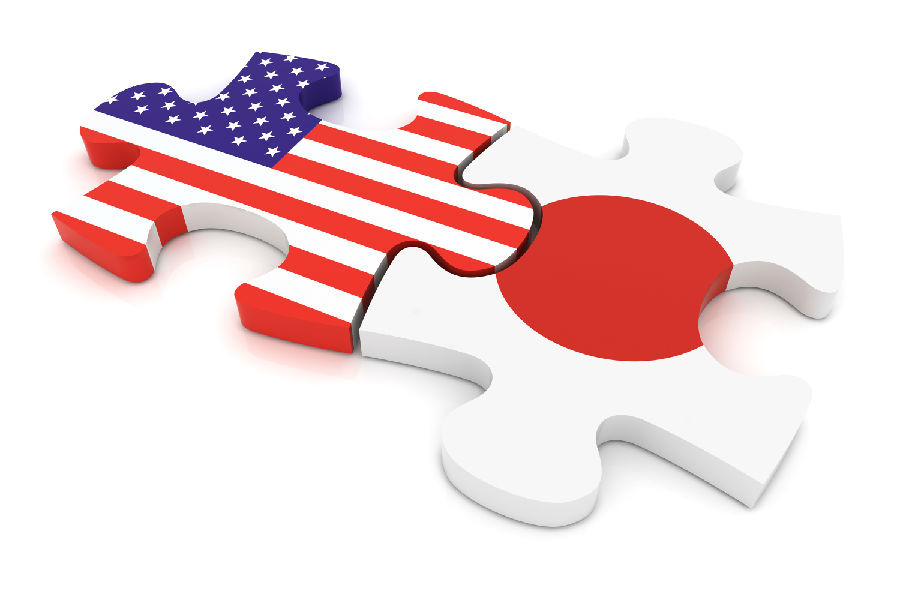Welcome to THE MAKING OF A NATION – American history in VOA Special English. I'm Steve Ember. This week, we continue our series of "Time Capsules." Each program will explore another facet, or decade, or period of America in the twentieth century. Last week, we discussed the Art and Culture that energized artists and writers during the difficult years of the Great Depression. This week, we'll look backward, to the beginning of the nineteen twenties – the Jazz Age, flapper, silent movies, more automobiles on the streets...
President Warren Harding's campaign of a Return to Normalcy after the First World War, the fall of Wall Street that led to the economic depression, Presidents Coolidge, Hoover, and Franklin Roosevelt and how they – and Americans – coped with the crisis. And we'll look ahead to the United States entry into a second world war as a result of the Japanese invasion of Pearl Harbor in December, nineteen forty-one. And all the years in between. It can only be a synopsis of these two event-filled decades, but we'll hope to give you a feeling for America between the two world wars – the companion story to last week's program in our Summer American Time Capsule Series. History is usually a process of slow change. However, certain events also can change the course of history. Napoleon's defeat at Waterloo was such an event. So was the first airplane flight by the Wright brothers. Or the meeting between the Spanish explorer Cortez and the Aztec king Montezuma.
All these events were moments that changed history. And so it was, too, with the Japanese attack on Pearl Harbor on December seventh, nineteen forty-one. "We interrupt this program to bring you a special news bulletin. The Japanese have attacked Pearl Harbor, Hawaii, by air, President Roosevelt has just announced..."A Japanese attack upon Pearl Harbor naturally would mean war. Such an attack would naturally bring a counterattack. And hostilities of this kind would naturally mean that the president would ask Congress for a declaration of war." The surprise attack on America's large naval base in Hawaii was a great military success for Japan. However, the attack on Pearl Harbor had more than a military meaning. The attack would force Americans to enter World War Two. More importantly, it would also make them better recognize their position as one of the most powerful nations in the world. In future weeks, we will discuss the military and political events of World War Two. But today, we look back at the years before the United States entered that war.

The period between the end of World War One and the attack on Pearl Harbor lasted only twenty-three years, from nineteen eighteen to nineteen forty-one. But those years were filled with important changes in American politics, culture and traditions. We start our review of these years with politics. In nineteen twenty, Americans elected Republican Warren Harding to the presidency. The voters were tired of the progressive policies of Democratic president Woodrow Wilson. They were especially tired of Wilson's desire for the United States to play an active role in the new League of Nations. Harding was a conservative Republican. And so were the two presidents who followed him, Calvin Coolidge and Herbert Hoover. All three of these presidents generally followed conservative economic policies. And they did not take an active part in world affairs. The change happened mainly because of economic troubles. "The country needs every ounce of its energy to restore itself." The nineteen twenties were a time of growth and business strength. President Calvin Coolidge said during his term that the "chief business of the American people is business." This generally was the same belief of the other Republican presidents during the period, Warren Harding and Herbert Hoover.
There was a good reason for this. The economy expanded greatly during the nineteen twenties. Many Americans made a great deal of money on the stock market. And wages for workers increased as well. However, economic growth ended suddenly with the stock market crash of October nineteen twenty-nine. In that month, the stocks for many leading companies fell sharply. And they continued to fall in the months that followed. Many Americans lost great amounts of money. And the public at large lost faith in the economy. Soon, the economy was in ruins, and businesses were closing their doors. President Hoover tried to solve the crisis. But he was not willing to take the strong actions that were needed to end it. As time passed, many Americans began to blame Hoover for the terrible economic depression.













